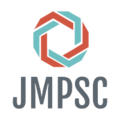Difference between revisions of "2021 JMPSC Accuracy Problems/Problem 2"
Mathdreams (talk | contribs) (→Solution 2 (Quick and a good way to check your answer)) |
|||
| Line 12: | Line 12: | ||
Notice that the average of <math>3</math> numbers that form an arithmetic progression is the median of the numbers. Also, notice that to maximize the average of three numbers, we need to maximize the numbers themselves. Using these observations, it is obvious the answer is <math>\boxed{98}</math>. | Notice that the average of <math>3</math> numbers that form an arithmetic progression is the median of the numbers. Also, notice that to maximize the average of three numbers, we need to maximize the numbers themselves. Using these observations, it is obvious the answer is <math>\boxed{98}</math>. | ||
| + | |||
| + | |||
| + | |||
| + | ==See also== | ||
| + | #[[2021 JMPSC Accuracy Problems|Other 2021 JMPSC Sprint Problems]] | ||
| + | #[[2021 JMPSC Accuracy Answer Key|2021 JMPSC Sprint Answer Key]] | ||
| + | #[[JMPSC Problems and Solutions|All JMPSC Problems and Solutions]] | ||
| + | {{JMPSC Notice}} | ||
Revision as of 16:21, 11 July 2021
Contents
Problem
Three distinct even positive integers are chosen between ![]() and
and ![]() inclusive. What is the largest possible average of these three integers?
inclusive. What is the largest possible average of these three integers?
Solution
The three biggest distinct positive integers that are ![]() or less are
or less are ![]() ,
, ![]() , and
, and ![]() . Thus, our answer is
. Thus, our answer is ![]() .
.
~Bradygho
Solution 2
Notice that the average of ![]() numbers that form an arithmetic progression is the median of the numbers. Also, notice that to maximize the average of three numbers, we need to maximize the numbers themselves. Using these observations, it is obvious the answer is
numbers that form an arithmetic progression is the median of the numbers. Also, notice that to maximize the average of three numbers, we need to maximize the numbers themselves. Using these observations, it is obvious the answer is ![]() .
.
See also
The problems on this page are copyrighted by the Junior Mathematicians' Problem Solving Competition. 









